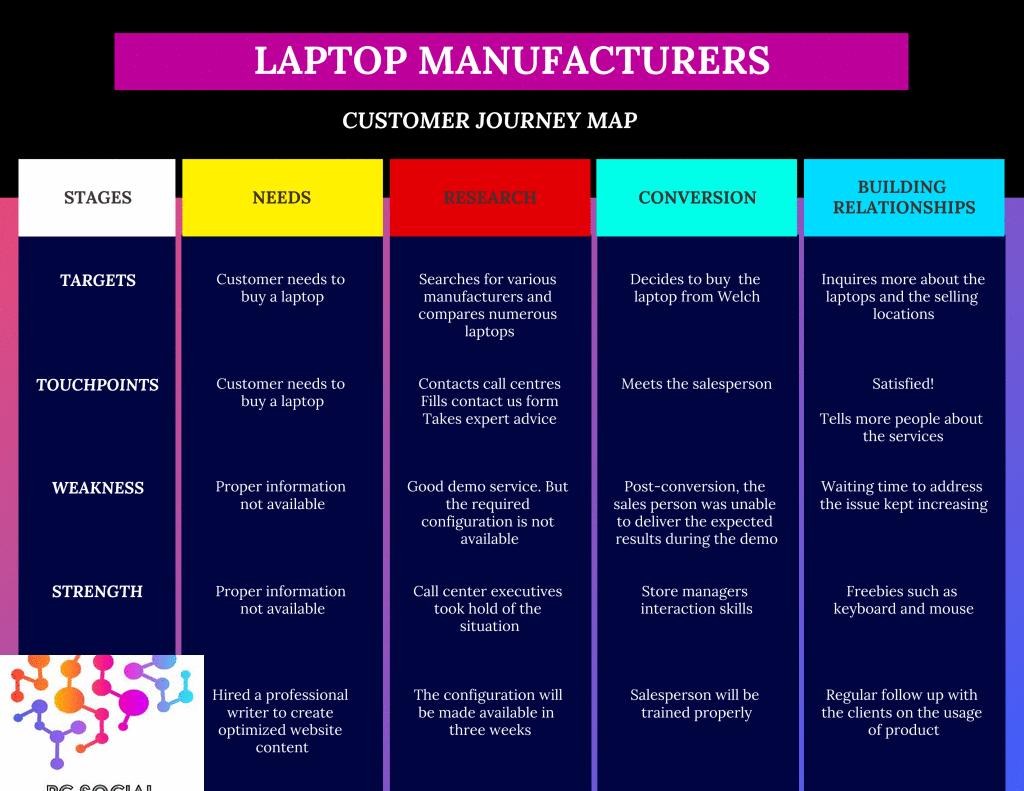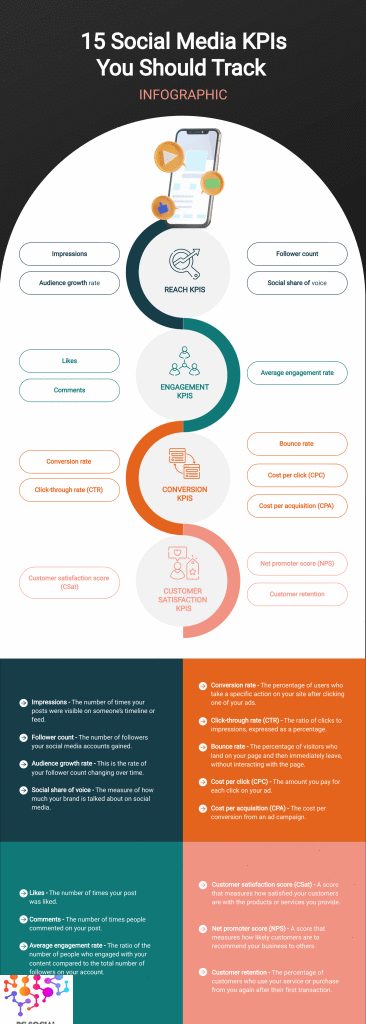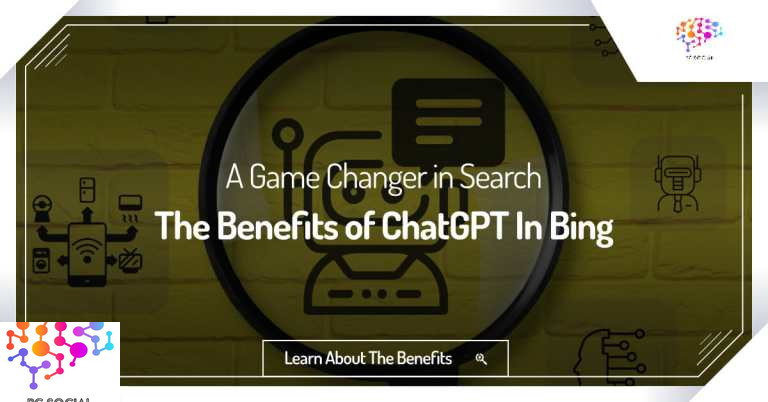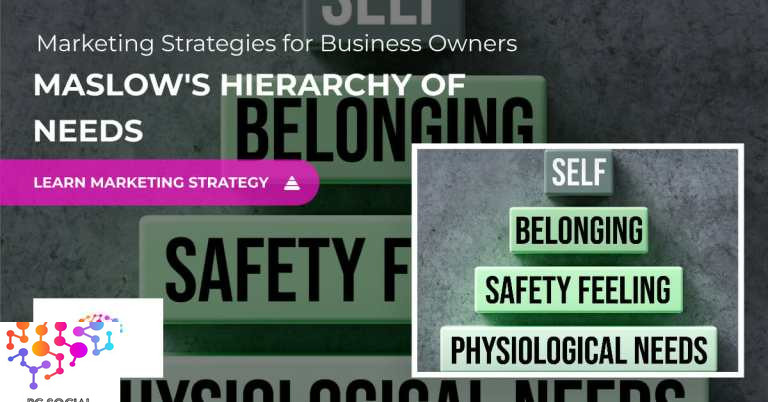As businesses aim to provide the best customer experience possible, identifying and optimizing customer touchpoints has become increasingly important. A touchpoint refers to any customer interaction with a company, whether online, over the phone, or in person. By improving these touchpoints, businesses can create a seamless and satisfying customer journey that encourages loyalty and repeat business.
In this blog post, we’ll explore 10 of the best customer touchpoints to optimize your customer journey and give tips for improving each.
1. Understanding the Customer Journey and Touchpoints
Understanding the customer journey and touchpoints is crucial in optimizing a business’s customer experience. As discussed in previous blog sections, touchpoints are the interaction points between a customer and a business. By mapping out the customer journey and identifying these touchpoints, companies can create a clear vision of their desired customer experience. From there, they can enhance customer journey orchestration and implement best practices to improve customer interactions at each touchpoint. Measuring customer experience with key performance indicators and crafting practical customer journey survey questions is essential to understanding the customer journey.
The customer journey typically starts with awareness and builds upon itself with consideration, purchase, loyalty, and advocacy. Each step of the customer journey has its unique touchpoints. For example, during the awareness stage, customers may interact with a brand via an advertisement or a website. Customers might interact with customer service representatives or look up product reviews online when purchasing. After purchasing, customers may interact through surveys or comment on their post-purchase experience. Loyal customers often share their experiences via social media or word of mouth. Businesses must recognize that every touchpoint is integral to the overall customer experience. By understanding the customer journey and analyzing each touchpoint for improvement, companies can create a better customer experience.
2. Creating a Clear Vision of Customer Experience
Building on the understanding of the customer’s journey and touchpoints, the next step to optimizing the customer experience is creating a clear vision. This requires carefully considering and defining the desired outcome for the customer at each touchpoint. By doing so, businesses can align all cross-functional teams toward a singular objective and create a cohesive story for the customer journey map. Companies can focus on enhancing the overall customer experience with a defined vision.
The vision of the customer experience should be built on a foundation of understanding the needs and motivations of the customer.
Companies should ask themselves:
- What will customers gain from interacting with our brand?
- How can we make their journey more efficient and enjoyable?
Once these initial questions are answered, companies should develop a detailed plan for implementing the vision. This plan should consider both short-term and long-term objectives. It should also include specific goals for each touchpoint to ensure customers’ consistent experience and meet or exceed customer expectations at every touchpoint.
To ensure a successful implementation of the vision, it is vital to involve all cross-functional teams, from sales and marketing to product design and customer service. Each group should be able to provide valuable insights on creating a positive customer experience across all touchpoints.
Utilizing Social Media Marketing
Social media marketing has become essential for businesses looking to improve customer touchpoints. With billions of users accessing and engaging with social media platforms daily, companies have access to an enormous potential customer base that can be reached through these networks. By optimizing their presence on social media, businesses can create personalized experiences for customers tailored to their needs and preferences. Social media can also build trust with potential customers by providing helpful tips and advice related to the industry or product offerings. Businesses should use social media to gather customer feedback and engage them in conversations about their experiences.
In addition, companies can create customer loyalty programs that reward customers for engaging with their brand on social media. This will encourage more engagement and help to increase customer satisfaction. Finally, businesses should use social media analytics to measure the success of their campaigns and gain insight into how customers interact with their brands on these platforms.
3. Mapping the Customer Journey for Improved Interactions
After clearly understanding a customer’s journey and touchpoints, the next crucial step is mapping it out for improved interactions. The mapping process involves identifying the different stages of a customer’s journey and the touchpoints they encounter. By understanding these touchpoints, businesses can optimize customer journeys and create more personalized experiences.
The first step in mapping the customer journey is to define the different stages of the trip. These stages could include awareness, consideration, purchase, loyalty, and advocacy. Once these stages are identified, businesses can identify the touchpoints associated with each step. Touchpoints might include website visits, email interactions, SMS messages, and social media campaigns.
Once we’ve mapped out each customer journey stage and its associated touchpoints, businesses can use this data to create more personalized customer experiences. For instance, if a customer is at a particular location in their journey (e.g., awareness or consideration), businesses can target them with relevant content that speaks directly to their needs and interests. Similarly, companies can tailor their messaging based on the customer’s purchase decisions, past purchasing behaviors, and current stages in the customer journey. Businesses can create a seamless and personalized customer experience, increasing loyalty and retention.
[
Laptop Manufacturing Customer Journey
4. Best Practices for Enhancing Customer Journey Orchestration
To truly optimize the customer journey, it’s essential to implement best practices for enhancing customer journey orchestration. This involves unifying and optimizing customer experiences across multiple touchpoints through a CJO platform. By understanding the customer journey and touchpoints, creating a clear vision of customer experience, and mapping the journey for improved interactions, businesses can guide customers from brand awareness to long-term loyalty and retention. Measuring customer experience with key performance indicators and crafting practical customer journey survey questions allows enterprises to continually improve their customer journey orchestration. With these best practices in place, companies can ensure every interaction across multiple touchpoints delivers the best experience to their customers, ultimately enhancing the overall customer experience and boosting revenue growth.
Understand the Customer Journey and Touchpoints
Companies can determine which steps are necessary to optimize the customer experience by understanding the customer journey and all touchpoints. Knowing where customers come from, where they go, their actions, and how long the journey takes is a great starting point for developing an effective CJO strategy.
Create a Clear Vision of Customer Experience
Companies need to define the type of customer experience they want to deliver to craft an effective CJO strategy. This involves establishing desired outcomes for each touchpoint, defining key performance indicators (KPIs) for measuring success, and setting realistic goals for improving customer experience across all channels.
Map the Customer Journey
With a clear vision of customer experience in place, businesses can map out the customer journey for enhanced interactions. This involves identifying different stages of the trip and touchpoints customers encounter. Mapping out the customer journey enables companies to identify pain points and areas where they can improve their interactions with customers.
Utilize Best Practices for Enhancing Customer Journey Orchestration
For optimizing the customer journey, businesses must implement best practices for enhancing customer journey orchestration across all channels. This includes unifying and optimizing customer experiences through a CJO platform, measuring success with key performance indicators, and crafting practical customer journey survey questions to improve experiences continuously.
Leveraging Customer Insights to Drive Results
Once companies have mapped out the customer journey and identified touchpoints, they can use insights gathered from these touchpoints to drive results. By leveraging customer insights such as purchase decisions, customer reviews, social media marketing, target markets, and more, businesses can create tailored experiences for each customer. This helps companies identify potential customers and understand their needs better to deliver personalized experiences, and it also enables them to measure their strategies’ effectiveness and optimize future campaigns. With actionable insights gleaned from mapping out the customer journey, companies can make informed decisions that will impact sales teams, customer service teams, blog posts, consumer touchpoints, and more to create positive experiences.
Develop Loyalty Programs to Retain Customers
Customer loyalty programs are a great way to enhance customer journey orchestration and drive long-term customer loyalty. Loyalty programs encourage customers to purchase more, providing rewards, discounts, or exclusive offers that increase their satisfaction and encourage repeat purchases. Companies should look for ways to optimize customer loyalty programs by offering incentives that appeal to their target markets and provide value beyond discounts or promotions.
Improve Interactions and Communication with Customers
Companies should ensure that all customer interactions are tailored to each individual. This can involve personal responses to emails, offering personalized product recommendations based on previous purchases or interests, and proactively reaching out if customers have questions or issues. Additionally, businesses should look for ways to continue engaging with customers after purchases, such as sending thank-you emails or requesting feedback on the experience. By understanding customer needs and building relationships with them, companies can create a positive sense of loyalty and trust among their customers.
Analyze Results of Customer Journey Orchestration Strategies
To ensure that customer journey orchestration strategies are effective, businesses must analyze their results regularly. Companies must assess customer satisfaction and look for opportunities to improve their strategy and touchpoints. This can involve collecting customer feedback, conducting surveys, running A/B tests, or analyzing customer journey maps. By assessing the results of customer journey orchestration strategies, companies can identify areas where they need to make changes to continue providing an excellent experience for customers.
Leverage Technology to Optimize Touchpoints
Businesses must leverage the latest technologies to optimize customer touchpoints. Companies can identify potential customers and tailor communication using customer segmentation, predictive analytics, and machine learning tools. Incorporating AI-driven chatbots into customer interactions will help improve customer service by providing timely responses and automated support. Companies should also use omnichannel marketing strategies to reach customers across multiple platforms with relevant messages.
Create Individualized Experiences for Prospective Customers
Companies should strive to create individualized experiences for prospective customers by understanding their needs and preferences. This could involve targeting them with personalized offers or engaging them on social media to foster relationships. Additionally, businesses should look for ways to provide value before customers purchase, such as offering product demos or providing helpful resources demonstrating their products’ advantages. By creating individualized experiences, companies can increase the likelihood of converting prospects into customers.
 Purchase Customer Journey
Purchase Customer Journey
5. Importance of Customer Journey Mapping in Product Experience
As seen in the previous sections, customer journey mapping is critical in identifying and optimizing touchpoints in a customer’s experience. But its importance goes beyond the initial interactions. In product experience, understanding the customer journey helps design products that meet customer needs and wants. A well-crafted journey map can provide insights into customer’s pain points and frustrations during product usage. This understanding can be used in prioritizing product enhancements and feature updates that will best address customer needs.
Journey mapping can also be used to identify new opportunities for product development. By understanding customer behavior and patterns, companies can better understand what features customers are looking for in products. This knowledge can be used to develop innovative solutions that address customer needs. Journey mapping provides a holistic view of the entire product experience from the customer’s perspective. This helps inform decision-making on optimizing the user experience and designing interfaces that support a seamless user experience. By understanding how customers interact with their product or service throughout the journey, companies can ensure they provide an optimal experience each step of the way.
Below are three examples for you to implement in your strategy.
- Small businesses can use customer journey mapping to identify areas of their product or service that could be improved. By understanding how customers interact with the product, small businesses can prioritize enhancements that best address customer needs and frustrations. This may involve developing new features, updating existing ones, or redesigning user interfaces to make them more intuitive and easy to use.
- Customer journey mapping can also help small businesses understand what product features customers are looking for. This knowledge can be used to develop innovative solutions tailored to customer needs and wants that give them a competitive edge over larger competitors.
- Understanding customer journeys also allows small business owners to identify opportunities for cross-selling and upselling products or services related to the one being offered. Small businesses can provide complementary solutions that enhance their overall experience with the company’s offerings by placing everyday customer needs.
In short, customer journey mapping is essential in delivering excellent product experiences. It enables companies to understand where customers are coming from and what they need while providing a comprehensive view of the customer journey.
6. Measuring Customer Experience with Key Performance Indicators
As we delve deeper into optimizing the customer journey, measuring customer experience through key performance indicators (KPIs) is crucial. These KPIs provide real-time data and insights into customer satisfaction, allowing us to make informed decisions to improve their experience. Whether monitoring customer feedback or tracking sales metrics, KPI dashboards consolidate data sources and provide visual and action-oriented feedback for making consequential business decisions. By monitoring and analyzing KPIs, companies can identify areas of improvement and make necessary changes to enhance customer satisfaction.
 15 Social Media KPIs to Track
15 Social Media KPIs to Track
Some of the most important KPIs for measuring customer experience include Customer Satisfaction Score (CSAT), Net Promoter Score (NPS), Customer Effort Score (CES), and Average Resolution Time. CSAT is a survey-based metric that measures customers’ feelings about a particular interaction. It’s typically measured on a scale of 1 to 10, with higher scores indicating greater satisfaction. NPS is another survey-based metric that measures customers’ willingness to recommend a product or service to others. CES measures how much effort customers put into their interactions with companies, while Average Resolution Time tracks how long it takes customer service teams to resolve queries and issues.
By tracking customer experience KPIs, companies can gain insights into customer needs and preferences, identify opportunities for improvement, and ultimately boost customer loyalty.
7. Call Centre Focus on Enhancing Customer Experience
When enhancing the customer experience, having a solid call center can make all the difference. As customers often first interact with a company through the call center, ensuring this touchpoint is optimized for success is crucial. From having well-trained agents to implementing effective call-handling processes, the call center plays a critical role in delivering exceptional service.
Small businesses can use the call center strategy to enhance customer experience by investing in a comprehensive customer service system that can respond quickly and effectively to customer inquiries and feedback. This system should provide personalized support to each customer, with features such as live chat, automated responses, and ready-made answers for frequently asked questions. Businesses should strive to make their call centers accessible from any device or location to ensure customers have the best possible experience no matter how they contact them. Companies should invest in training for their staff so that customers receive immediate responses with accurate information and a friendly attitude. Small businesses should measure performance regularly to ensure call center strategies are working correctly and making the desired impact on customer experience.
8. Crafting Effective Customer Journey Survey Questions
Practical customer journey survey questions are crucial in improving your customer experience. In the previous sections, we learned the importance of understanding the customer journey and touchpoints, mapping the journey for improved interactions, and measuring customer experience with key performance indicators. As we focus on enhancing the customer journey orchestration and call center experience, we must gather customer feedback through surveys. However, crafting these questions requires careful consideration to ensure that they provide valuable insights.
When creating customer journey survey questions, the most survey questions that will help enhance the customer experience important factor is to keep the questions focused and specific. Make sure that each question you ask is directed towards a particular area of your customer experience process, such as ease of use, satisfaction with customer service representatives, or general impression. Additionally, be sure to explain why you are asking the question. This will help customers understand why their input is valuable and motivate them to respond honestly.
It is also essential to ensure that your questions are relevant and engaging. Ask questions that elicit thoughtful customer responses about their experiences with your business. Consider using open-ended questions or asking customers to rate specific aspects of your product or service on a scale from one to five. This will give you a better understanding of how customers feel about you and your services.
Below are five examples of practical customer journey survey questions.
1. On a scale from 1 to 5, how satisfied were you with the customer service representative who assisted you?
2. How would you rate your experience using our product or service?
3. What aspects of our product or service stood out most?
4. Do you feel that we adequately addressed your concerns on time?
5. What are your suggestions for improving our customer experience process?
By crafting practical customer journey survey questions, businesses can gain valuable insights into their customer experience process. This will help them identify areas of improvement and make necessary changes to deliver exceptional service.
9. The Impact of Repeat Customers on the Customer Journey
Repeat customers are crucial for any successful business and can significantly impact the customer journey. As mentioned in previous sections, repeat customers have many times the value of a new customer who hasn’t yet made their first purchase. Therefore, keeping your repeat customers happy and returning for more is essential. One of the best strategies for turning new customers into repeat customers is to provide excellent customer service and support. By creating memorable customer experiences, customers are more likely to recommend your business to others and even pay more for your products or services. In addition to creating a positive customer journey and experience, companies can also offer loyalty programs that provide discounts or other perks to loyal customers. By doing so, customers are incentivized to continue making purchases and remain faithful to your brand.
Other ways to ensure that repeat customers keep coming back is to ensure that they are offered the latest products or services and access exclusive offers or discounts. Repeat customers are an invaluable asset to any business, so it is essential to ensure that they keep coming back. One of the best ways to do this is by offering them the latest products or services and exclusive offers or discounts. By providing access to these incentives, businesses can show their customers that they value their loyalty and reward them for their patronage.
A great way to ensure repeat customers know the latest products or services is by emailing updates on what’s new. This can be done in various ways, such as through newsletters or promotional emails. Additionally, businesses can invite repeat customers to special events to learn about new offerings and get exclusive offers or discounts.
In addition to offering new products and services, businesses can create customer loyalty programs to reward repeat customers for patronage. This can include anything from discounts on future purchases to gifts or special privileges. By providing these rewards, companies can show their customers that they value their loyalty and demonstrate appreciation for their continued support.
10. The Role of B2B Customer Experience Programs in Boosting Revenue Growth
As a business, one of your ultimate goals is to generate revenue growth. And one effective way to achieve that is by implementing B2B customer experience programs that can significantly impact your revenue. By creating positive experiences for your customers, you build their loyalty and increase the likelihood of them returning for repeat business. This ongoing relationship with your customers can add substantial value to your bottom line. In addition, a strong customer experience program can also help you differentiate yourself from your competitors and win new customers. With a well-executed B2B customer experience program, you can foster customer loyalty, increase sales, and, ultimately, boost your revenue growth.
A successful B2B customer experience program should include several key elements. First, you must focus on understanding your customers’ needs and developing solutions that meet those needs. This means investing in a comprehensive customer service system that can respond quickly and effectively to customer inquiries and feedback. You also want to ensure you provide a personalized experience for each customer so they feel valued and appreciated. Additionally, staying on top of the latest technological advancements is essential to help make serving your customers more accessible, faster, and more efficient. Be sure to measure the performance of your customer experience program so that you can continually refine it and ensure it’s genuinely helping your business grow.
Conclusion
Repeat customers are essential for businesses to grow sustainably. Companies must create positive customer experiences, provide exclusive offers and discounts, and develop customer loyalty programs to ensure that repeat customers remain loyal. Additionally, businesses should invest in a comprehensive customer service system that responds quickly and effectively to customer inquiries and feedback. With a well-executed B2B customer experience program, companies can foster customer loyalty, increase sales, and boost revenue growth.

- By: Fernando Perez
- Date: 26th Sep 2023
20 Video Content Ideas to Boost Your Video Marketing
- 31 min read
- 0 comment
To help jumpstart your next video project, here are 20 video content ideas to boost your video marketing efforts.

- By: Fernando Perez
- Date: 24th Aug 2023
The Power of Data-Driven Content Marketing: How it Can Transform Your Business
- 27 min read
- 2 comments
By analyzing valuable insights into their audience's behaviors, You can use these to create your next content marketing campaign.

- By: Fernando Perez
- Date: 16th Aug 2023
The Exciting Future of AI: ChatGPT 5
- 28 min read
- 0 comment
In this article, we’ll look at what ChatGPT 5 can do and how AI continues to evolve. We will discuss how ChatGPT 5 represents an extraordinary leap forward in AI innovation.

- By: Fernando Perez
- Date: 14th Aug 2023
Target Audience vs Target Market — What’s the Difference?
- 29 min read
- 1 comment
In this blog post, we will uncover the enigmatic nature of these two ideas and demonstrate their significant impact on businesses.

- By: Fernando Perez
- Date: 7th Aug 2023
5 Data-Driven Marketing Strategies for Business Growth
- 37 min read
- 0 comment
Using data-driven strategies to reach the right audiences and maximize ROI. This article will discuss five data-driven marketing strategies that businesses can use to drive growth.

- By: Fernando Perez
- Date: 12th Jul 2023
Why Bing’s ChatGPT Integration is a Game Changer in Search
- 26 min read
- 0 comment
In this article, we will cover the advantages of Bing’s incorporation of ChatGPT into its search engine.

- By: Fernando Perez
- Date: 30th Jun 2023
Maslow’s Hierarchy of Needs: Marketing Strategies for Small Business Owners
- 9 min read
- 1 comment
In this presentation, we will discuss how Maslow’s Hierarchy of Needs can enhance marketing strategies for small business owners.

- By: Fernando Perez
- Date: 27th Jun 2023
Consumer Insight: Predicting Future Needs through Data Analytics
- 40 min read
- 1 comment
This article will explore how data analytics can be used to analyze consumer trends and predict future needs.

- By: Fernando Perez
- Date: 26th Jun 2023
Leveraging A/B Testing to Determine Different Messaging Strategies (Interactive Guide)
- 11 min read
- 1 comment
In this interactive guide, we will explore the benefits of A/B testing and provide tips on leveraging A/B testing to determine the effectiveness of different messaging strategies.

- By: Fernando Perez
- Date: 21st Jun 2023
12 Experiments You Want to Try for Data-Driven Marketing
- 37 min read
- 2 comments
In this article, we will show you twelve experiments you should try if you want to succeed in data-driven marketing.

- By: Fernando Perez
- Date: 20th Jun 2023
10 Google Analytics Hacks You Need as a Small Business Owner
- 31 min read
- 3 comments
This article will cover 10 Google Analytics hacks for small business owners to utilize to take their online presence to the next level.

- By: Fernando Perez
- Date: 14th Jun 2023
The Advantages of Artificial Intelligence Automation in Business
- 35 min read
- 0 comment
This article discusses the advantages of using AI automation in business, such as automating tedious, repetitive tasks, automating machine learning.


1 Comment
5 Data-Driven Marketing Strategies for Business Growth -
August 29, 2023[…] marketing messages and offers to align with customer expectations. By tailoring content to specific customer journey stages, companies can provide relevant information and solutions that resonate with their target […]